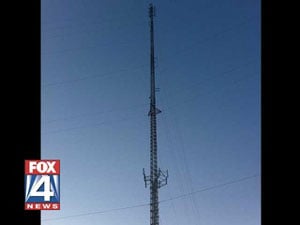With last week’s tragic helicopter crash, our nation suffered a tremendous loss. Having provided training for these special teams for more than ten years, we know first-hand the dedication and commitment these individuals have to our country and our freedom. Because of this, ROCO has supported the Special Operations Warrior Foundation for many years now and is very committed to its cause, which is to support the families of these brave individuals. We feel that the BEST thing we can do now is to pray for these families and HELP support their children’s education. We hope you will take a look and pass the word.
The mission of Special Operations Warrior Foundation (SOWF) is to provide a college education to every child who has lost a parent while serving in Army, Navy, Air Force and Marine Corps Special Operations during an operational or training mission. Because the SOWF will add as many children to the program from last week’s helicopter crash as it normally does in an entire year, we wanted to bring your attention to this most worthy organization.The SOWF Board of Directors decided earlier this week that the Warrior Foundation will offer full college scholarships to the children of ALL of the American servicemen who perished in the recent CH-47 helicopter crash in Afghanistan. “This was a tragic day for our military and our families. While the majority of personnel onboard the CH-47 were special operators, and they are automatically covered by the foundation, we wanted to offer our services to all who were on that fateful mission,” said retired Air Force Col. John T. Carney, Jr., the foundation’s president.
The Warrior Foundation is in the process of contacting all of the families affected by this tragedy to inform them about the SOWF college program, which provides funds for a full post-secondary education, including tuition, books, fees, room and board and a computer and printer. Currently, the SOWF has 144 children of fallen Army, Navy, Air Force and Marine Corps special operations personnel enrolled in colleges and universities across the country; and 182 students have graduated via SOWF scholarships. The foundation has pledged to provide a college education for another 600 boys and girls who are not yet college age.
Because the SOWF expects to add many children to the scholarship program from last week’s loss of 30 U.S. servicemen, your donation would not only be a fitting tribute to these brave and selfless warriors, but help ensure their sons and daughters are among those who receive the education that their fallen parents would have wanted them to have.
Click to donate – thank you!

 The Burleson (TX) Fire Department recently got a chance to put their skills (and stamina)to the test when they rescued a worker from atop a 750-ft cell tower. It sounds like they did a great job, and serves as an important reminder of the challenges these towers can pose to local emergency responders. Preplanning for this type of incident is critical – especially when it occurs in the middle of summer! Temperatures were 100+ degrees at the time of the dramatic rescue.
The Burleson (TX) Fire Department recently got a chance to put their skills (and stamina)to the test when they rescued a worker from atop a 750-ft cell tower. It sounds like they did a great job, and serves as an important reminder of the challenges these towers can pose to local emergency responders. Preplanning for this type of incident is critical – especially when it occurs in the middle of summer! Temperatures were 100+ degrees at the time of the dramatic rescue. Authorities are investigating the suffocation of two North Carolina workers in a water system manhole—one of whom apparently died trying to rescue the other.
Authorities are investigating the suffocation of two North Carolina workers in a water system manhole—one of whom apparently died trying to rescue the other. What does getting struck by a pickup traveling 45 mph and being in the path of a trench wall collapse have in common? The outcome is typically not going to be positive…
What does getting struck by a pickup traveling 45 mph and being in the path of a trench wall collapse have in common? The outcome is typically not going to be positive… As a first responder, it’s your worst nightmare… pulling up to a scene of a building collapse with a woman trapped under a beam screaming out for her child who’s buried in the rubble. That’s what happened yesterday in a small town in Arkansas that’s located about 55 miles west of Little Rock. With an incident like this – or the recent tornados with destruction everywhere in sight – would you know how to make the best use of the tools on your apparatus while waiting for USAR back-up?
As a first responder, it’s your worst nightmare… pulling up to a scene of a building collapse with a woman trapped under a beam screaming out for her child who’s buried in the rubble. That’s what happened yesterday in a small town in Arkansas that’s located about 55 miles west of Little Rock. With an incident like this – or the recent tornados with destruction everywhere in sight – would you know how to make the best use of the tools on your apparatus while waiting for USAR back-up?


